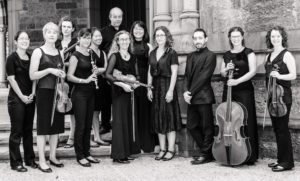Capitol Early Music continues to bring top flight musicians to perform and teach in Washington. Please join us in 2016-2017, at St. George’s Episcopal Church in Arlington!
♦ December 4, 2016 3:00 pm The Rose Ensemble performs A Rose in Winter: The Miracle of Life in the Dark of Night.
Medieval and Renaissance Choral Music for the Christmas Season.
♦ February 3, 2017 8:00 pm Kleine Kammermusik performs Tides and Treaties: Music of the 1720s
Chamber music for paired oboes and bassoon, strings and keyboard continuo.
♦ February 4, 2017 Baroque Ensemble Workshop with Kleine Kammermusik. For continuo and melody instruments.
♦ March 31, 2017 8:00 pm Paige Whitley-Bauguess in Characters of the Dance: A Baroque Dance Performance.
17-18th century dances performed in costume. With instrumentalists Heloise Degrugillier, recorder; Mary Findley, violin; Douglas Poplin, cello; and Patrick Merrill, harpsichord.
♦ April 1, 2017 Baroque Dance Workshop for dancers and instrumentalists.



